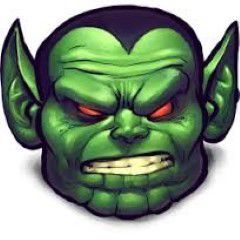ACC561 Final Paper MCQ Bank1 25 25
Q1 At which level of brand loyalty is advertising often used heavily to promote a product?
a. Brand recognition
b. Brand preference
c. Brand insistence
d. Brand equity
Q2. Jim stops at the local convenience store on his way home to buy a six-pack of beer. He goes in thinking he will purchase his usual brand, but ends up buying another because it is on sale. What stage of brand loyalty is Jim presently at?
a. Brand insistence
b. Brand awareness
c. Brand preference
d. Brand recognition
Q3. Generic products are:
a. characterized by plain labels, little or no advertising, and no brand names.
b. identified through a brand name owned by a manufacturer or other producer.
c. typically national brands sold exclusively by a single retail chain.
d. identified through a brand name owned by a wholesaler or retailer.
or retailer.
Q4. Generic products are:
a. characterized by plain labels, little or no advertising, and no brand names.
b. identified through a brand name owned by a manufacturer or other producer.
c. typically national brands sold exclusively by a single retail chain.
d. identified through a brand name owned by a wholesaler or retailer.
or retailer.
Q5. The Kirkland brand is owned by Costco, and the products can only be purchased at Costco stores. Costco contracts with manufacturers to produce and package products under the Kirkland name. This arrangement is called:
a. family branding.
b. individual branding.
c. generic branding.
d. private branding.
Q6. Dell manufactures and market computers and several related products, such as laptops, desktops, notebooks, and printers, all under the Dell name. This strategy is called _____ branding.
a. family
b. extension
c. individual product
d. private label
Q7. - Dawn, Joy, and Ivory are dish liquid brands manufactured by Proctor & Gamble. The branding strategy for these products is called _____ branding.
a. private
b. family
c. generic
d. individual
Q8 - A company's ability to market a product successfully at a higher price is directly related to its:
a. market capitalization.
b. product relevance.
c. brand equity.
d. market share.
Q9. A global brand generally is defined as:
a. one that has production facilities in two or more non-home countries.
b. one that sells at least 20 percent outside its home country.
c. one that uses regional branding for essentially the same product.
d. one that is recognizable across the world by its unique trademark.
Q10. - Responsibilities of a category manager include all of the following except:
a. setting performance standards and measuring actual results against the standard.
b. defining the category based on the target market's needs.
c. staffing the sales force, including the national sales teams assigned to major retailers.
d. identifying consumer groups and the store clusters with the greatest sales potential.
Q11. - A characteristic of a good brand name is that it should:
a. avoid any specific connotation relative to product content.
b. be short and also descriptive of the product or its characteristics.
c. hold universal appeal with respect to its customers.
d. be pronounced the same in every language.
Q12. - A brand for which the owner claims exclusive legal protection is known as a:
a. patent.
b. copyright.
c. trademark.
d. royalty.
Q13. - Trade dress refers to:
a. visual components that contribute to the overall look for a product.
b. a promotional philosophy of targeting all sales efforts to the trade.
c. the general size of the packaging used by a product.
d. the correlation between a trademark and its trade name.
Q14. The main role of packaging in today's marketplace includes all of the following except:
a. assisting in marketing the product.
b. promote recycling practices.
c. protecting the product from physical damage.
d. ensuring cost effectiveness.
Q15. - Packaging serves all of the following functions except:
a. enhancing shelf visibility.
b. offering convenience for the consumer.
c. deterring theft and pilfering.
d. locating new markets for existing products.
Q16. A _____ carries an item's brand name or symbol, the name and address of the manufacturer or distributor, information about the product's composition and size, and recommended uses.
a. trade dress
b. label
c. trademark
d. brand mark
Q17. The numerical bar code system used to record product and price information is known as the:
a. uniform serial bus.
b. unitized product locator.
c. unique label identifier.
d. universal product code.
Q18. The strategy of attaching a popular brand name to a new product in an unrelated product category is known as:
a. brand extension.
b. brand reinforcement.
c. brand engagement.
d. brand licensing.
Q19. An apparel manufacturer decides to create a line of t-shirts depicting the most popular soft drinks on the market. The images would include Coke, Pepsi, Sprite, Mountain Dew, and Dr. Pepper. This venture would involve:
a. line extension.
b. brand extension.
c. brand licensing.
d. brand engagement.
Q20. The _____ strategy seeks to increase sales of existing products in existing markets.
a. product development
b. market innovation
c. product diversification
d. market penetration
Q21. Locating new markets for existing products is called:
a. market penetration.
b. market development.
c. product development.
d. product diversification.
Q22. Product cannibalization is the:
a. difference in expected and actual outcome from the implementation of a market
penetration strategy.
b. shrinking of a firm's market share due to competition from rivals.
c. decline in brand loyalty towards a firm due to existing market conditions.
d. erosion of market share due to other products from the same manufacturer.
Q23. With the introduction of the Diet Pepsi brand, Pepsi was faced with decreased sales of the pre-existing original Pepsi brand. This situation is known as:
a. cannibalization.
b. market envelopment.
c. product encroachment.
d. parasitization.
Q24. Potential consumers experience a series of stages beginning with learning about a new product, trying it, and deciding whether or not to purchase it regularly. These series of stages are known as the:
a. consumer product life cycle.
b. adoption process.
c. product breakdown structure.
d. market proliferation model.
d. category manager.
Q25. Companies are beginning to replace product managers with a new position that is now responsible for profit and loss, as well as the marketing functions. The title of the new position is called:
a. brand manager.
b. product innovator.
c. marketing strategist.
d. category manager.
Q25. The average rate of new-product failure is approximately _____ percent.
a. 25
b. 40
c. 60
d. 80
ACC561 Final Paper MCQ Bank1 25/25
kindly find h...




Online Users
-
 Smarttutoring
Today
Smarttutoring
Today




A+ - Thank you!
Thanks for the positive feedback!